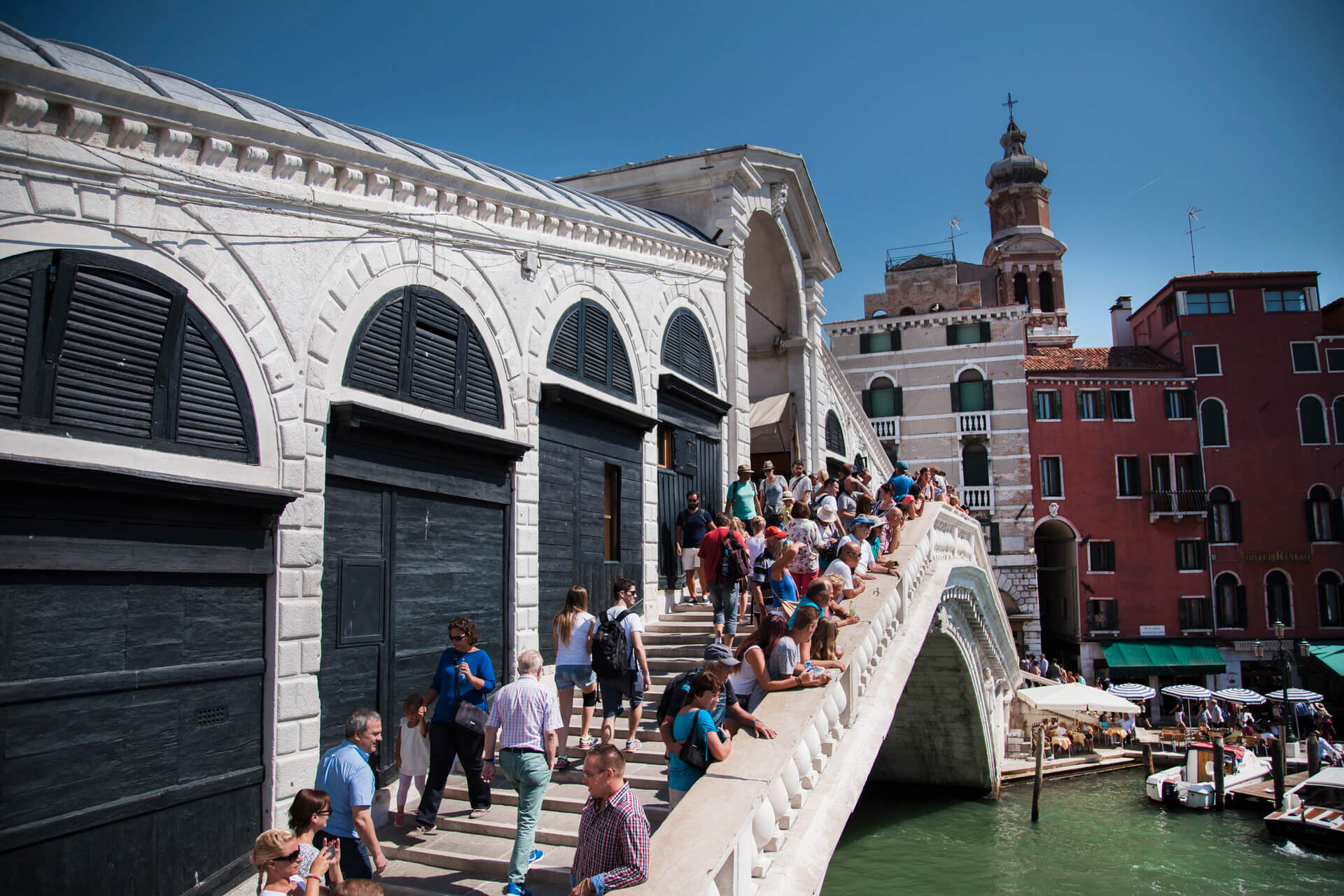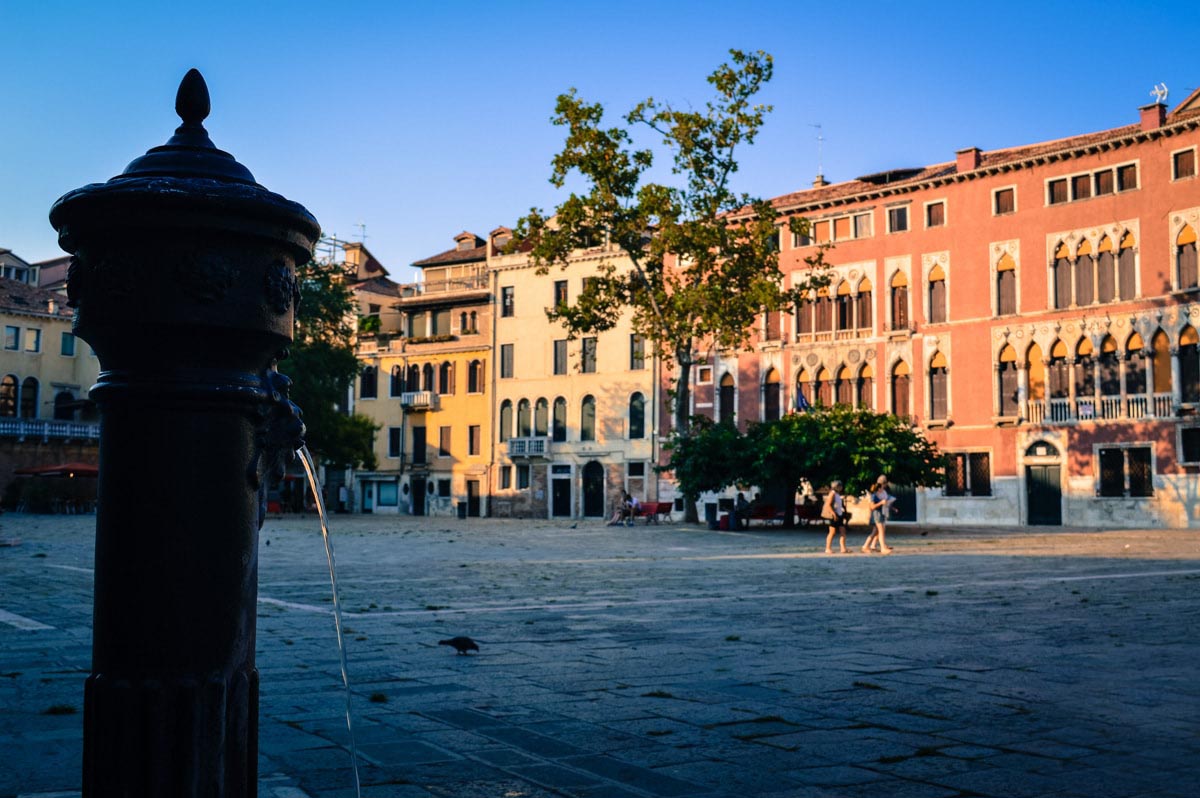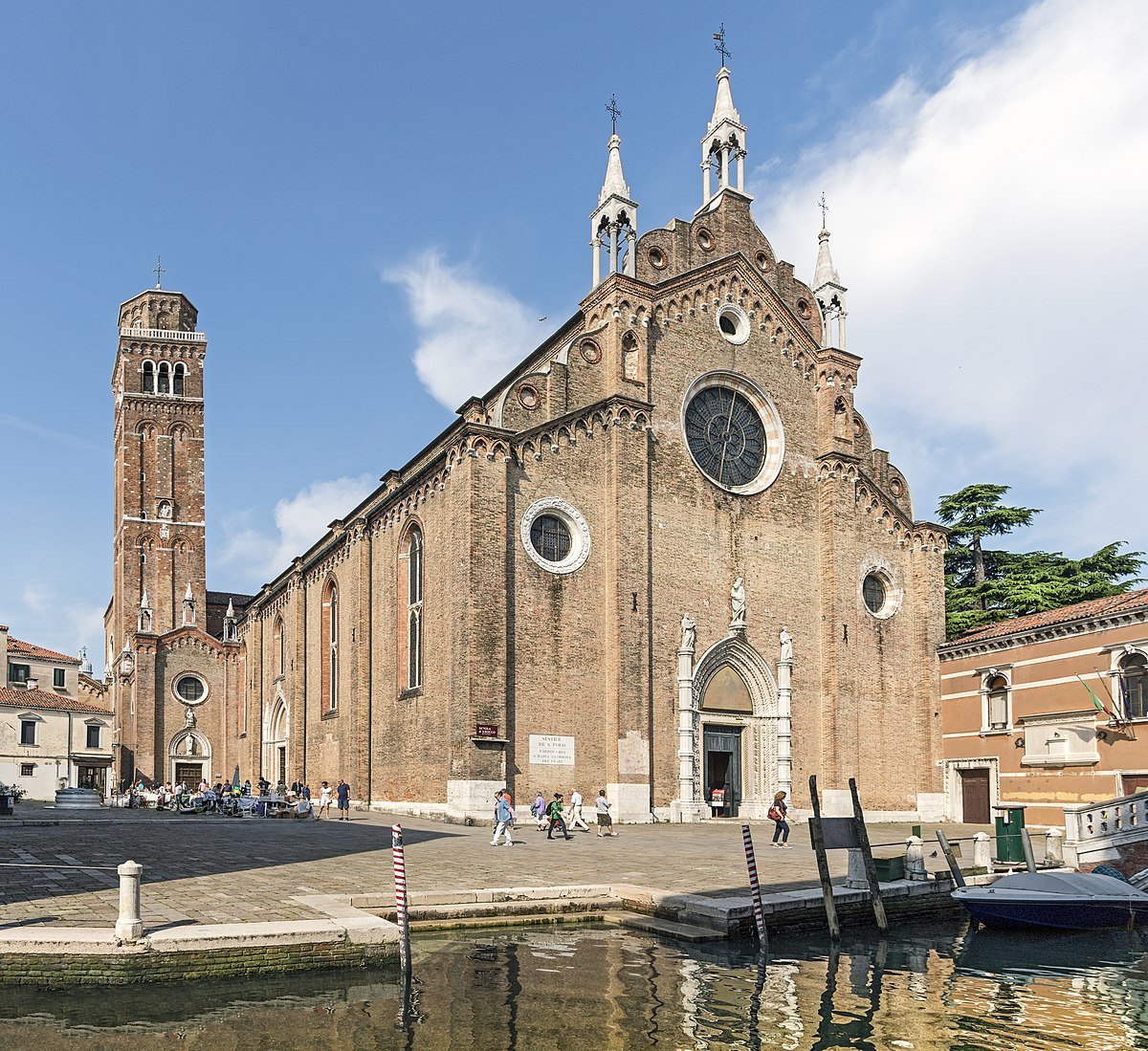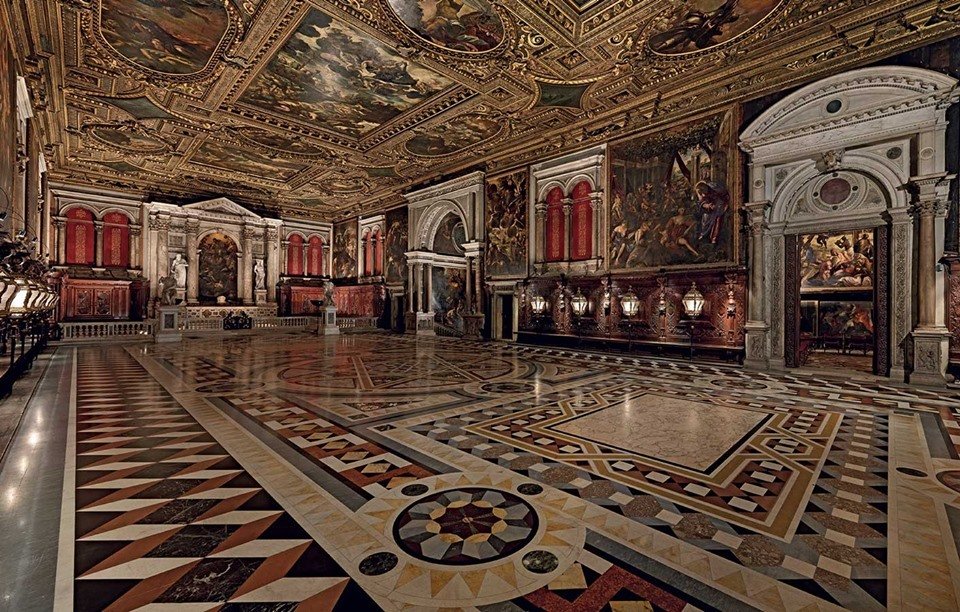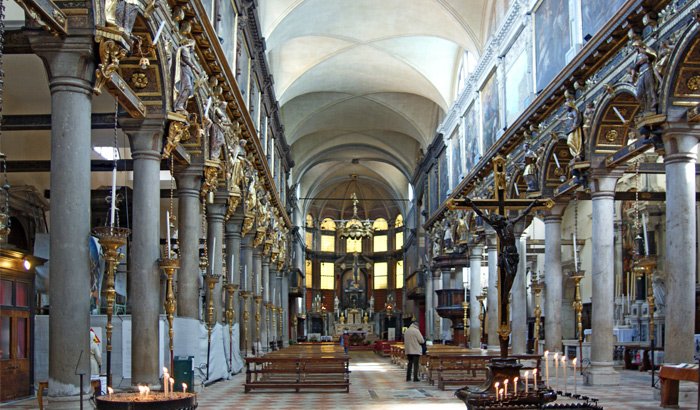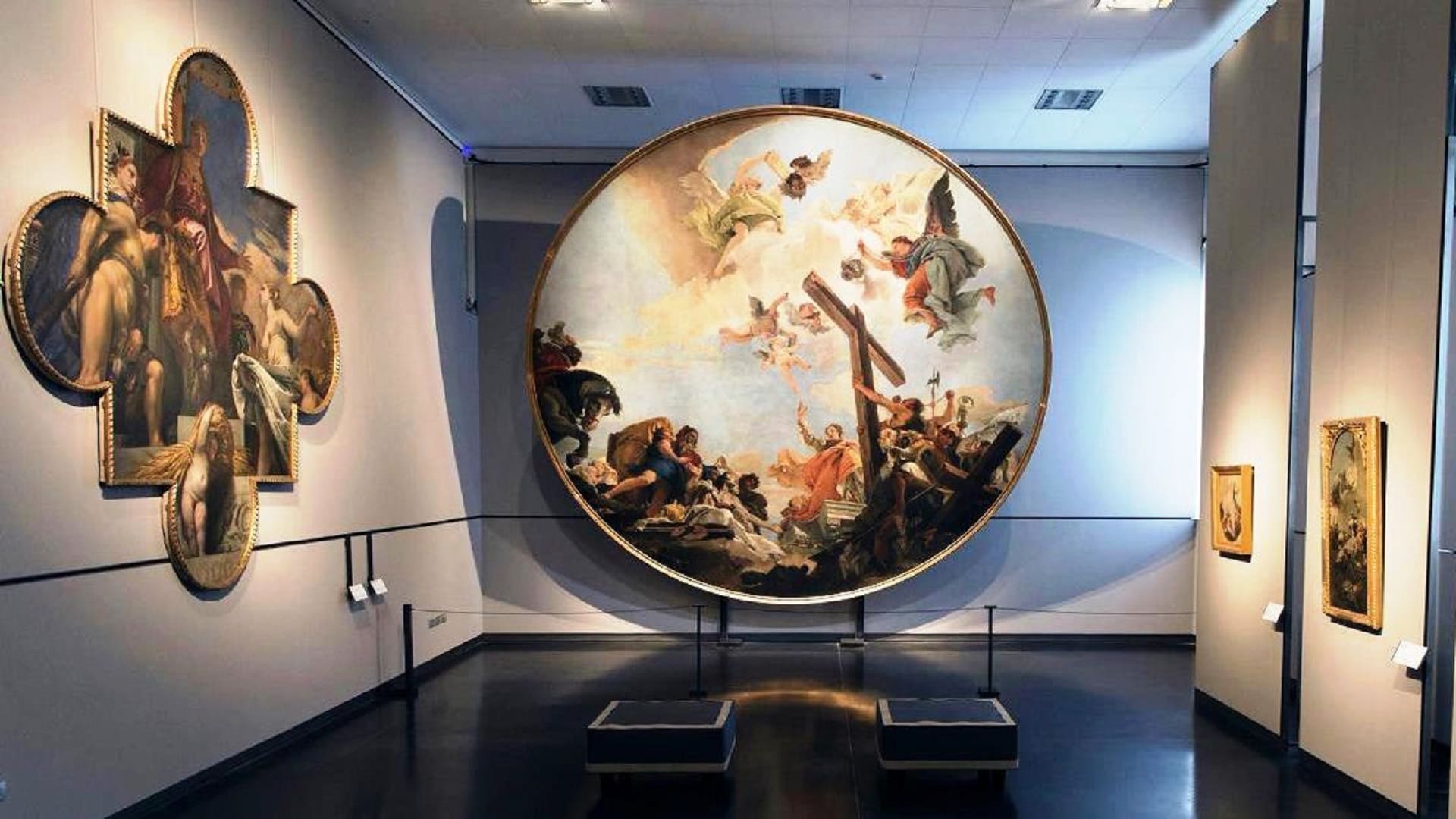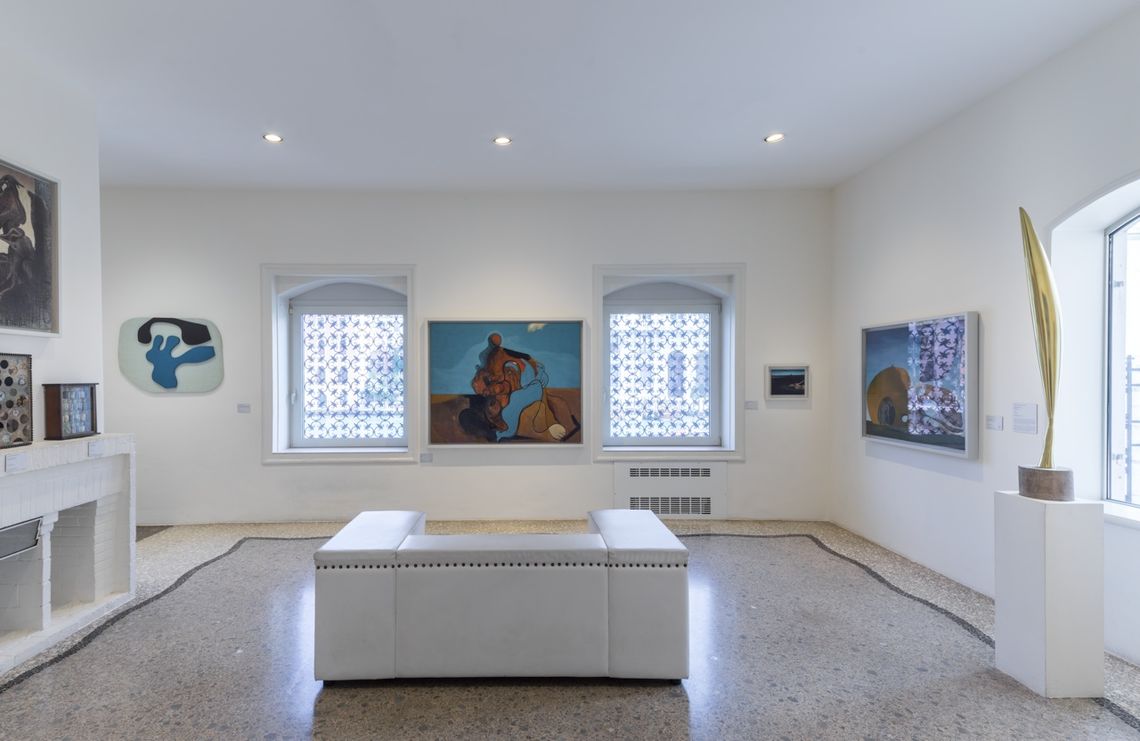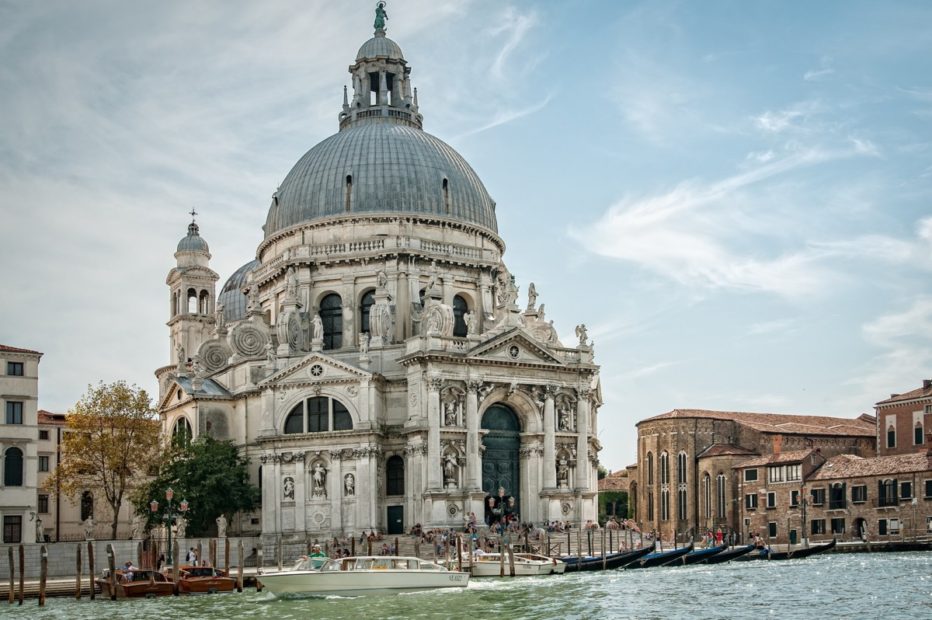EXPLORING VENEZIA
2nd. Day In VeneziaSTART ITINERARY
We start from Rialto
Early in the morning cross this marvelous and unique Bridge on the outside, if you want to admire the panorama or inside if you want to have a look at the shops. In front of you there is the Ruga of Rialto with all its multi-coloured stalls. Just down the Bridge, on your right you will find, though hidden by the fruits stalls, Campo St. Giacomo, where what is traditionally defined as the most ancient church in Venice stands out. From there go towards the Erbaria, the Market and the Pescaria. Then go back through the calle of the Spice Sellers and towards the Ruga Vecchia.
ALONG THE WAY
Campo St. Polo
After passing through Campo S.Aponal and Campiello dei Meloni you will soon reach Campo St. Polo, one of the largest in the town and still now, like in the past, a place for important performances and shows, where you can find wonderful gothic buildings and the homonymous Church, inside of which you can admire some remarkable works by Veronese, Tintoretto and Palma the Young. After the visit (half an hour) go along the calle of the Nomboli and soon you will arrive at Campo St. Tomà. From there you will easily reach Campo dei Frari.
CAMPO DEI FRARI AND ITS BASILICA
CAMPO DEI FRARI
The Church of St. Maria Gloriosa dei Frari begun in 1340 but completed more than one hundred years afterwards, keeps some reminiscences and splendors of more than five hundreds of Venetian history, as inside there are the mortal remains of Antonio Canova. The visit of the interior (about half an hour) will give you the opportunity of admiring the wooden choir of 1300, the magnificent Assunta by Tiziano and the Madonna of Ca’ Pesaro always of the same author.
BETWEEN ART RELIGION AND CULTURE
San Rocco School
The great schools had many religious and Christian solidarity aims: the presence at the clerical cerimonies, the joint prayer, the elevation of a saint to a patron, the escort to the burial and the Masses said for the dead, the medical care for sick people and the assistance for the poor or the unfit for work. But they also had economical aims (taxes) as they were necessary also for the balance of power; in fact people provided for their exclusion from the political power by means of their offices inside the School. St. Rocco school is one of the most ancient and best preserved in Venice. Inside (visit of about an hour) Jacopo Tintoretto devoted one of the most complete and intact cycles of the Italian painting to the main events of the Scriptures.
BETWEEN ART RELIGION AND CULTURE
Campo St. Margherita
Once you have gone through Campo St. Pantalon and had a rest at Campo St. Margherita, have a look at the School of the Carmini, on the southern side of the Campo, that like St. Rocco one, is one of the few schools which still can be visited, and where you can admire the well-known Madonna del Carmelo by G.B. Tiepolo. Then go towards Campo St. Barnaba and the Academy Galleries.
AMONG HISTORICAL ART MASTERPIECES
The Accademia gallery
The visit of the Galleries (about two hours) is obligatory for those who want to enter one of the most remarkable picture galleries in Italy, where you can admire the greatest representants of the painting of the Veneto from 1300 to 1800: Lorenzo Veneziano, Andrea Mantegna, Giovanni Bellini, Giorgione, Lorenzo Lotto, Jacopo Tintoretto, Paolo Veronese, Tiziano, Pietro Longhi, Francesco Guardi, Canaletto. If you prefer contemporary art, alternatively or in addition to the Academy Galleries you will have the opportunity of visiting the Peggy Guggenheim Collection.
CONTINUING WITH MODERN ART
Peggy Guggenheim collections
Keeping the Academy bridge on your left and going on along Calle San Vio and the homonymous Campo, you will soon reach the Fondamenta Venier dei Leoni, where you will find the entrance of Ca’ Corner dei Leoni, place of an original collection (visit of one hour) which owes its existence to the attentive eye of the exuberant Peggy Guggenheim, namely a lively heiress, merchant and patron of works of art, who bought it still unfinished along the Canal Grande in order to keep her collection of paintings by De Chirico, Pollock, Mondrian, Balla, Mirò, Picasso, Kandinskij, Ernst and many others!
WONDERFUL BASILICA OF VENICE
Basilica della Salute
Following the itinerary after the narrow under vestibule of St. Gregorio, you will find the disruptive and extremely original and white Baroque structure of the Church of St. Maria della Salute, a masterpiece by Baldassarre Longhena. Before catching the water-bus that will take you to the other side of the Canal Grande, go to the Punta della Dogana in order to admire the Dock of St. Marco. Get off at St. Marco stop: from there or by going through St. Marco Square (on your right) and the Mercerie, or by turning left towards Calle Valleresso and then Campo St. Luca, you will easily go back to Rialto.
#Enjoy
Respect
Venezia
😉


